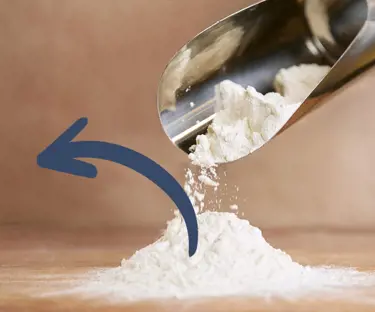What do I mean by this? Traditionally, whey protein has been sought after in the sports nutrition field by athletes focused on muscle mass gain, endurance and recovery or, for example, by clinicians requiring high-end clinical nutrition. While those market niches are still strongly demanding whey, there is now a much broader range of players seeking its benefits, and they’re coming from mainstream markets.
Which mainstream markets are pursuing whey protein? As always, consumer attitudes and behavior are driving demand, so let’s examine what those attitudes are and how they’re influencing the use of whey protein.
It’s good for me!
The leaders of whey protein’s expanding audience are consumers seeking health benefits for an active lifestyle. These people are not in the gym daily, but exercise regularly and want particular foods to fuel their healthfulness. We call this customer category “active nutrition” to distinguish it from the more narrow “sports nutrition” category.
Informed nutrition consumers know that whey is a well-established form of high-quality protein, with a full spectrum of essential amino acids. Some also take into account that its quality makes it cost-effective from a protein-per-kilo perspective – more so than plant-based protein. So, while the speciality whey proteins, such as hydrolysates and isolates, are pricier, they are still more affordable than alternatives.
With the health benefits of protein high in these consumers’ minds, it’s not surprising that we’re seeing whey protein being included in products marketed as high-protein versions of their conventional forms, such as cookies, enhanced dairy products, potato chips, smoothies, milkshakes, and even spreads.
Plant-based for the planet?
Another sweeping trend is for natural, sustainable products. Accordingly, plant-based protein is fashionable. It’s perceived as sustainable and is suitable for vegans.
I’m often asked how whey, as a protein derived from milk, is holding up against the rise of plant-based versions. We’ve examined this subject closely at Innova, and I can report that our surveys and analyses of product launches show that whey protein remains the market leader.
A key reason for its sustained popularity is consumers’ present tendency to trust simpler, more familiar and “cleaner” food products. One example of this shows up among U.S. consumers, 33 percent of whom state that whey protein is a familiar/very familiar ingredient (Innova, 2017).
Speaking of more natural ingredients, and with its success driven by the clean label trend, native whey protein (i.e. not originating as a by-product of cheesemaking) rates particularly highly in this regard, being frequently promoted as the least processed whey product.
I believe the trend for products that are organic, natural, additive-free and non-GMO is far from fleeting, and it is definitely morphing into the new standard.
High-protein dairy
Whey protein holds up well against this standard. The milk that whey comes from is a natural product that’s inherently high in protein. In recent years, dairy product launches have given this fact prominence with overt “high protein” claims. In some cases, this expounds the integral protein of dairy, and in others it refers to a protein content that is raised by adding whey protein — for example, in spreadable cheese and milk drinks.
This contemporary championing of dairy’s protein content is a smart move by the dairy sector to target “active nutrition” consumers. I expect that the use of whey to boost protein will continue to accelerate and expand to other foods beyond dairy, such as chocolate and baked goods. Consumers will appreciate the added health-giving properties of these foods along with the improved flavour and texture offered by whey protein.
Novel, clean and green
This expansion into different food products is likely to go hand-in-hand with increasing innovation as more brands and products seek to differentiate themselves from their competition. Many will achieve this with novel products, along with claims of health and “clean” ingredients. Specialised versions of whey protein, such as isolates and hydrolysates, will often be key constituents. An example of this is protein water, which makes use of whey protein hydrolysate to create a light beverage that is more like a soft drink than the traditional creamy consistency of dairy.
So stay tuned: Thanks to a couple of zeitgeists — active nutrition and clean, green living — whey protein is infiltrating more supermarket shelves than most of us ever thought possible!
This blog contains material and information intended for B2B customers, suppliers and distributors, and is not intended as information to the final consumers.


